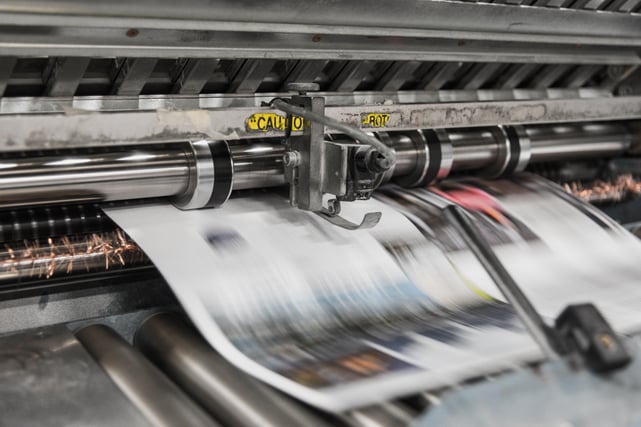Index Content
A press release is a communiqué written by a company or organisation and sent to the different media so that they can echo its content. It is, therefore, an institutional information tool used by companies to communicate with the outside world and which contains internal information of interest and current affairs .
Press releases are issued and sent out by the different departments or communication offices. Given the similarities of these documents with some journalistic formats, it is advisable that journalists from these offices write them. Although the format, as we shall see, is very similar to that of news, the content tends to be more like a chronicle, as it has a point of view, which is that of the issuing company. However, truthfulness must always prevail above all else.
The content
Press releases are a very useful instrument from a marketing point of view. Through them, companies provide information about themselves, tell their version of events or provide new information, updates, developments, reports, etc. However, the level of information should always prevent press releases from resembling advertisements. Nevertheless, they are excellent generators of public opinion .
The most important thing in terms of the content of the press release is topicality. The information, statement or data exported from the company must be current. Otherwise, no media will find it useful. Without departing from objectivity and truthfulness, these releases always give a favourable, beneficial and aligned view of the company's interests.
In line with the above, it is important that the press release has a tinge of newsworthiness. Always with the company as the protagonist, the content should be a combination of information, topicality, relevance and novelty.
The content should be clear, simple and brief. It is important, given the one-sided nature of press releases, that the message is clearly understood and does not give rise to misunderstandings or misinterpretations. Otherwise, it could have the opposite effect. There is no specific rule, but the length of a press release usually ranges between one and one and a half pages. In some specific cases, such as the presentation of a study, an analysis or the results of an investigation, it may exceed this estimated limit.

Bank Phrom via Unslpash
It is very useful if the text includes statements in quotation marks, especially if the content revolves around a person. The transcription of the words of a primary source, or of a protagonist, is always an added value for any journalistic text, adding veracity, quality and reliability.
It is increasingly common to accompany the text with graphic material, either complementary or corroborative of what has already been said. It favours the adaptability of the press release to different formats as well as providing reliable evidence to corroborate the content, as is the case with statements.
On the format:
The press release is similar to the news at a structural level. In fact, one of the best strategies to generate an effective press release is to make it as similar as possible to a news item in a media outlet, so that when they publish it, they have to make as few changes as possible. In this way, it could almost be said that the company publishes directly in the different media.
We refer to the term "different media" because a fundamental requirement of the press release is that it is designed to be communicated not only in newspapers, but also in radio, television or any other audiovisual format. Part of the task of the press office is to create a text that is admissible in any format with as few modifications as possible.
The structure of a press release:
- Pre-title: This is not compulsory, although it is advisable, especially if the press release is a little longer than usual. It is usually used to identify the person who is being talked about, who is speaking or the main subject of the text. For example: "Mrs. Estefanía Sánchez, director of X company"
- Title: Like the headline of any news item, it must be attractive, short (between 8 and 12 words), simple and clear, but with strength and interest. It must also convey the message and be well written, which is essential when working with few words.
- Summary: Also called subtitle, this is a series of secondary headlines, between 1 and 4, longer than a headline (between 20 and 30 words).
- Lead: This is one of the most important parts, also called "lead". It is between 4 and 5 lines long and summarises the most essential parts. It is not necessary (nor advisable, in fact) to follow the 5W rule for news (who, when, where, how, how, and why).
- Text: This is the rest of the information. Approximately 3 or 4 paragraphs long, but no longer than one and a half pages. It expands the note with all the information that has not been previously exposed. At an organisational level, the arrangement of one idea per paragraph is usually used.
- Coda: This is a short paragraph (4 lines at most) that serves as a conclusion and summary.
- Corporate data: At the end of the press release, relevant information about the author is usually included: name of the person who writes it, position held within the company, email or contact details, website...
Like any other marketing tool, press releases must adapt to the new times and formats. The issuing company itself can publish them on its social networks, accompanying them with the corresponding graphic elements. And, in the case of reports or balance sheets, it is useful to make graphics or infographics, both for the company itself and for use by the media.
If there is a great advantage of the press release, compared to other communication strategies, it is that with them the company always has control of the information. Although the journalist who writes the news (or any other format) from it, can expand and contrast the information, the company has given a closed material. In other formats such as press conferences, the media can take control of the information by asking questions, extracting other data, asking questions and questioning.



